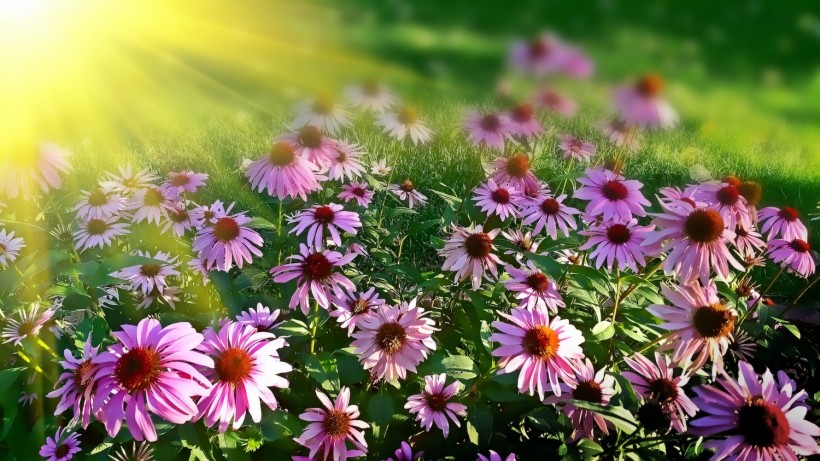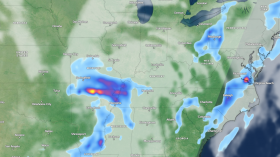Native plants are beautiful, hardy and great for helping with pollinators and the environment. They're also often overlooked in home gardens. Many people see native plants as boring, but they're actually incredibly useful and attractive. If you've been thinking about adding a native garden to your property, that's great news! It's not as difficult as you might think.
With the right knowledge, you can design and plant a beautiful native garden in almost any space. Read on to find out more about how to grow a native garden.
What is a Native Garden?
A native garden is any garden that uses plants native to your area. Native plants are well adapted to your climate and soil type, which means they are much easier to grow in your area.
A native garden is often a wildlife garden, as many native plants are great for attracting pollinators and wildlife. A native garden can be inside or outside. It can be in a large space or in a small yard. It can be formal or informal. It can be planted against a wall or in a pot on a patio.
No matter how big or small or where it is, a native garden is a great way to bring nature into your life.
Why Grow a Native Garden?
There are many good reasons to grow a native garden:
Native plants are easy to care for. They are adapted to your local climate and don't require special care. You don't need to worry about them dying in the winter, or being attacked by pests and diseases.
Native plants are beautiful and come in a wide range of colours, shapes, and sizes. Even when they're not in bloom, they have a lovely, flowing quality that makes them great for all-year-round interest.
Native plants are important for the health of your local ecosystem attracting local pollinators, birds and wildlife. For example, Milkweed and wildflowers are critical for sustaining local pollinator populations. In drought tolerant regions, growing a xeriscape can help with water conservation.
They can positively impact climate change. By using native plants, you're reducing your care needs (ex: reducing carbon pollution from lawn mower exhaust as an example). In regions like California where water conservation is key, growing natives that are drought tolerant will naturally save water. Native plants such as oak trees are also effective at storing greenhouse gas carbon dioxide.
What to Know Before You Begin
The best time to start planting in your native garden is in the spring. After a long winter, it's important to water and feed your plants to help them get established. You'll also want to make sure you're not planting anything too large, like trees or shrubs, too early.
Once the ground has thawed, you can begin selecting your plants and planning your design. Make sure you know your soil type, sun exposure, and desired growth height for each plant. You should also think about how you want to incorporate your native garden into your landscape.
How to Select Your Plants
When selecting your plants, you'll want to choose natives that are appropriate for your climate, soil type, and sun exposure. You can find lists of native plants in your area online, or at your local garden center. When choosing your plants, keep a few things in mind:
Make sure you're getting the right variety. Many nurseries sell plants that are hybrids. Hybrid varieties look very different from the wild plants, and often don't have the same ecological benefits. Choose native species whenever you can. For example, Mexican Bird of Paradise is native to Texas while Butterfly Bushes are native to California.
Select plants that have the right soil requirements for your region. If you have clay soil, don't choose plants that require sandy soil.
Select plants appropriate for the sun exposure in your yard. If you have full sun, don't select shade-loving plants.
Select plants that are beneficial for pollinators and wildlife. If you're in an area that's suffering from a lack of pollinators, you can plant a garden that helps to sustain them.
How to Incorporate Natives into Your Yard
Even if you don't have a big garden space, you can still add natives to your yard. You can do this by using plants in your landscaping, adding a garden bed, or creating a mini-meadow.
Using natives in your landscaping is an easy way to add color and interest to your yard. If you're redesigning or building a new house, consider using natives throughout your landscaping.
In your front yard, you can add natives in your garden beds, or use natives as plants on the edge of your walkway, to add color to your yard and prevent soil erosion.
Creating a mini-meadow is a great way to add color and texture to your yard. A mini-meadow is a large planting of native wildflowers and grasses. You can add a mini-meadow to your yard, or use it as a border for a pathway or driveway. You can also add natives to your existing lawn or garden bed, or add a new garden bed. You'll want to choose low-growing, perennials that are suited to your soil type.
Creating The Perfect Native Garden
A native garden is a great way to add nature and color to your life. Native plants are easy to care for, beautiful, and are critical for sustaining local pollinator populations. Whether you have a large garden space or a small yard, you can add natives to your property.
You can add natives in your landscaping, in a garden bed, or in a mini-meadow. With the right knowledge, and a bit of patience, you can design and plant a
beautiful native garden in almost any space.
© 2024 NatureWorldNews.com All rights reserved. Do not reproduce without permission.
* This is a contributed article and this content does not necessarily represent the views of natureworldnews.com




![Wildfire Activity in Wet African Tropical Forests Exacerbated by Deforestation, Climate Change [Study]](https://1471793142.rsc.cdn77.org/data/thumbs/full/70409/280/157/50/40/wildfire-activity-in-wet-african-tropical-forests-exacerbated-by-deforestation-climate-change-study.jpg)

